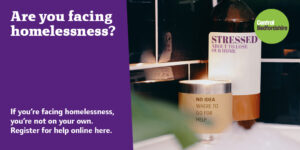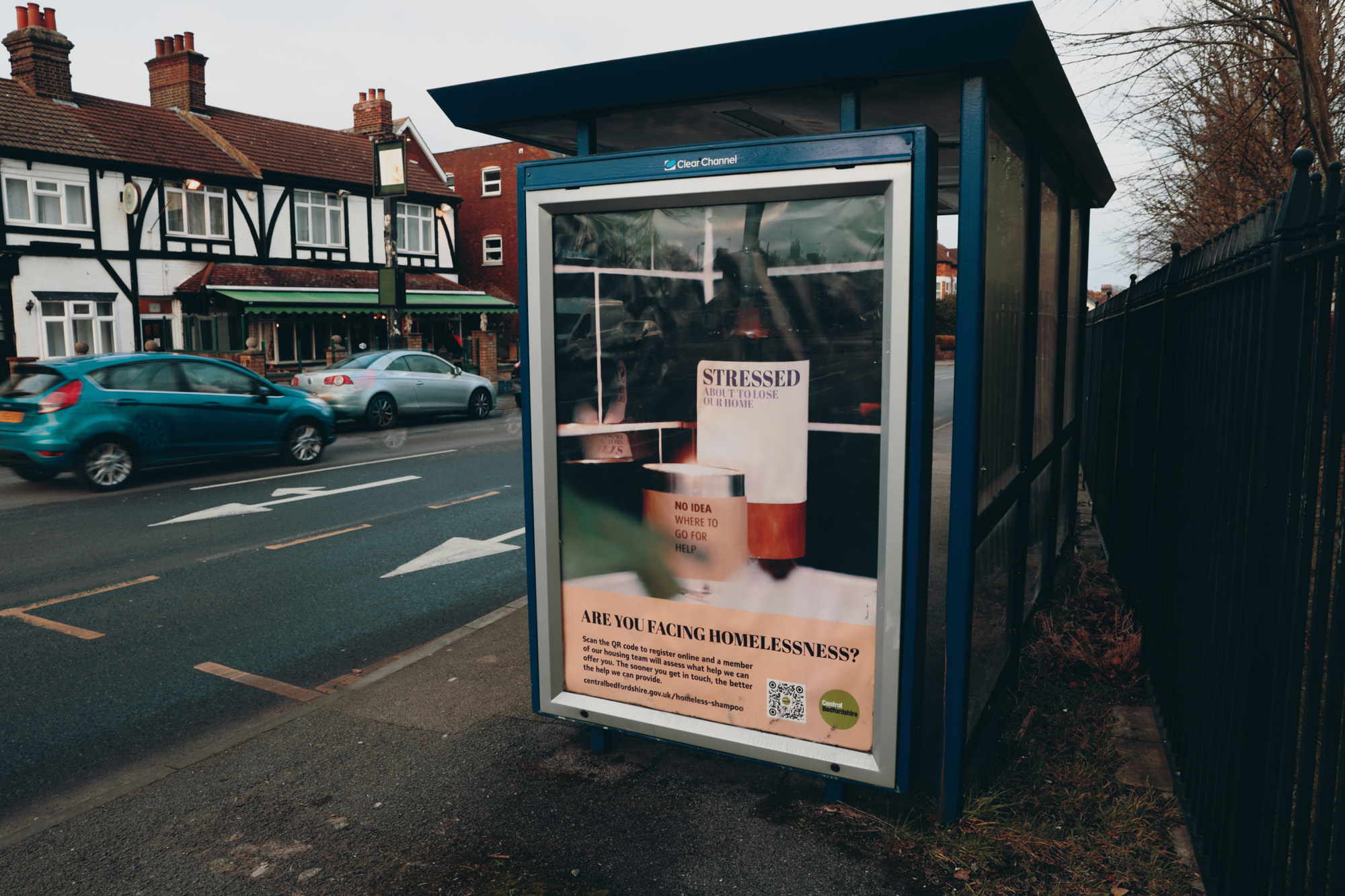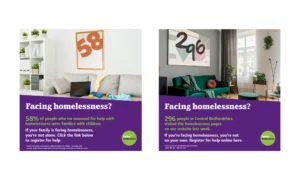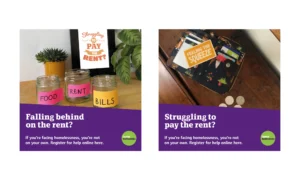Humanising homelessness and driving early intervention
Categories
Artwork, Campaign, Creative, Social Media
Elements
Connection
The housing team at Central Bedfordshire Council came to us in 2020 with an urgent need to address the issue of homelessness. Specifically, they were receiving an average of 45 homeless presentations a week, more than half of which were from households who had reached crisis point.
When contacted for help at such a late stage, the team found it difficult to step in and offer support. It was also placing a great deal of pressure on the service and the need for temporary accommodation. So, our aim was to encourage at-risk people to come forward much earlier in the process, to allow the team the time they needed to intervene.
The first challenge to overcome was a general lack of awareness over the support available from the council, so we knew we needed to raise awareness via localised outdoor marketing and digital channels. The second challenge – overcoming the stigma that prevented people from accessing help – meant taking a fresh look at the imagery we’ve come to associate with homelessness.
The Challenge
The housing team at Central Bedfordshire Council faced an urgent need to address homelessness, with an average of 45 homeless presentations per week, placing strain on resources and temporary accommodation. The challenge was to encourage at-risk individuals to seek support earlier in the process, allowing the team to intervene effectively.

The Solution
To overcome the challenge, our team focused on raising awareness of the council support services available, and de-stigmatising homelessness. We designed the ‘Closer To Home’ campaign to humanise homelessness through relatable imagery and proactive messaging. Utilising digital and outdoor advertising, as well as a council website redesign, we aimed to encourage early intervention and prevention.
The Results
We were privileged to work alongside the team on this campaign over a long period of time, starting before the Covid-19 pandemic hit, and navigating a period of huge change. As the pandemic progressed, the fallout completely changed the demographic of who was at risk of homelessness, and our campaign became even more vital.
The campaign yielded significant results. Social media engagement increased by up to 57%, with targeted advertising achieving a conversion rate nearly double the industry average.
Prevention applications for CBC rose to 53%, surpassing the national average of 46.5%, resulting in successful prevention outcomes that are 17% higher than the national average. Additionally, cases classified as prevention increased by 52%, indicating successful early intervention and a reduction in crisis situations. These outcomes demonstrate the campaign’s effectiveness in driving early engagement with council services, ultimately preventing homelessness and enabling timely interventions.
From the start of the campaign to December 2021 there was




